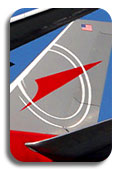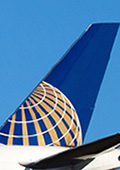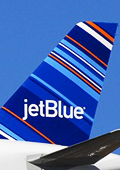A Major Change in Aircraft Tracking Is Coming in 2017
By 2017, flights worldwide will be tracked via satellite in real time, thanks to a decision from the UN's World Radiocommunication Conference.
On November 11, representatives from over 160 countries at the the ITU World Radiocommunication Conference agreed to designate the 1087.7-1092.3 MHz frequency band for “Earth-to-space” aircraft tracking.
Talk of improving the transmittance of flight data started soon after flight MH370 went down over a year ago. Even though the search grid covered nearly three million square miles, only a piece of the wing was recovered—and that was 18 months later and 2,300 miles from the focus of the recovery efforts.
The current ground-based radar system leaves an estimated 70 percent of airspace uncovered, allowing pilots to communicate only with other aircraft and ground stations. That ground-based system prevents the aircraft's position from being reported while in remote areas, particularly over the oceans and North and South poles.
The change will allow satellites to receive those same automatic surveillance-broadcast transmissions every 15 minutes—or more often, in cases of distress. Switching to a satellite-controlled system, instead of one that relies on radars on the ground, will allow aircraft to be tracked in real-time, globally, according to International Telecommunication Union (ITU) head Francois Rancy.
ITU Secretary-General Houlin Zhao said the response came in record timing for such a large global issue.
Currently, about ninety percent of commercial aircraft have a communications system that sends signal to a ground station. Initially, it appears the same on-board hardware will be able to send the signal instead to a satellite. Currently, some airlines receive information from those systems directly, while in other cases the manufacturer charges a fee for that information.
The switch to a satellite system could mean that airlines will reduce their spending related to the ground-based system, since there will be a fee paid to the satellite company for the service.
While satellite signals are expected to be sent at least every 15 minutes, the International Civil Aviation Authority has yet to determine whether those signals will be automatic or pilot-controlled.
Airlines now have a year to adopt the new tracking system, with the International Civil Aviation Organization setting a November 2016 deadline.
-

Delta Air Lines 04/23/2024
-

United Parcel Service 04/23/2024
-

Hawaiian Airlines 04/22/2024
-

United Airlines 04/22/2024
-

JetBlue Airways 04/19/2024
 AIRLINE PILOT CENTRAL
AIRLINE PILOT CENTRAL